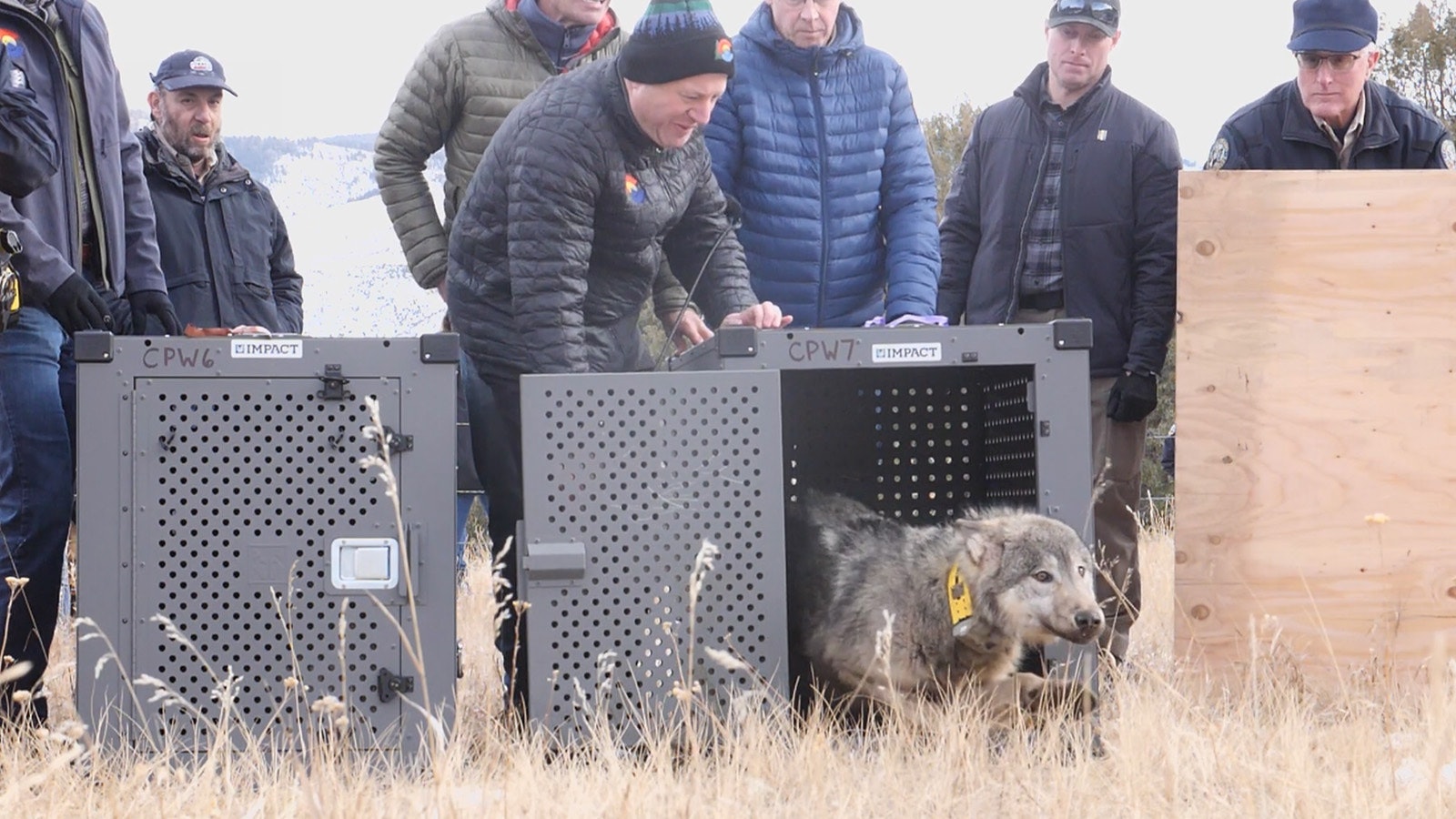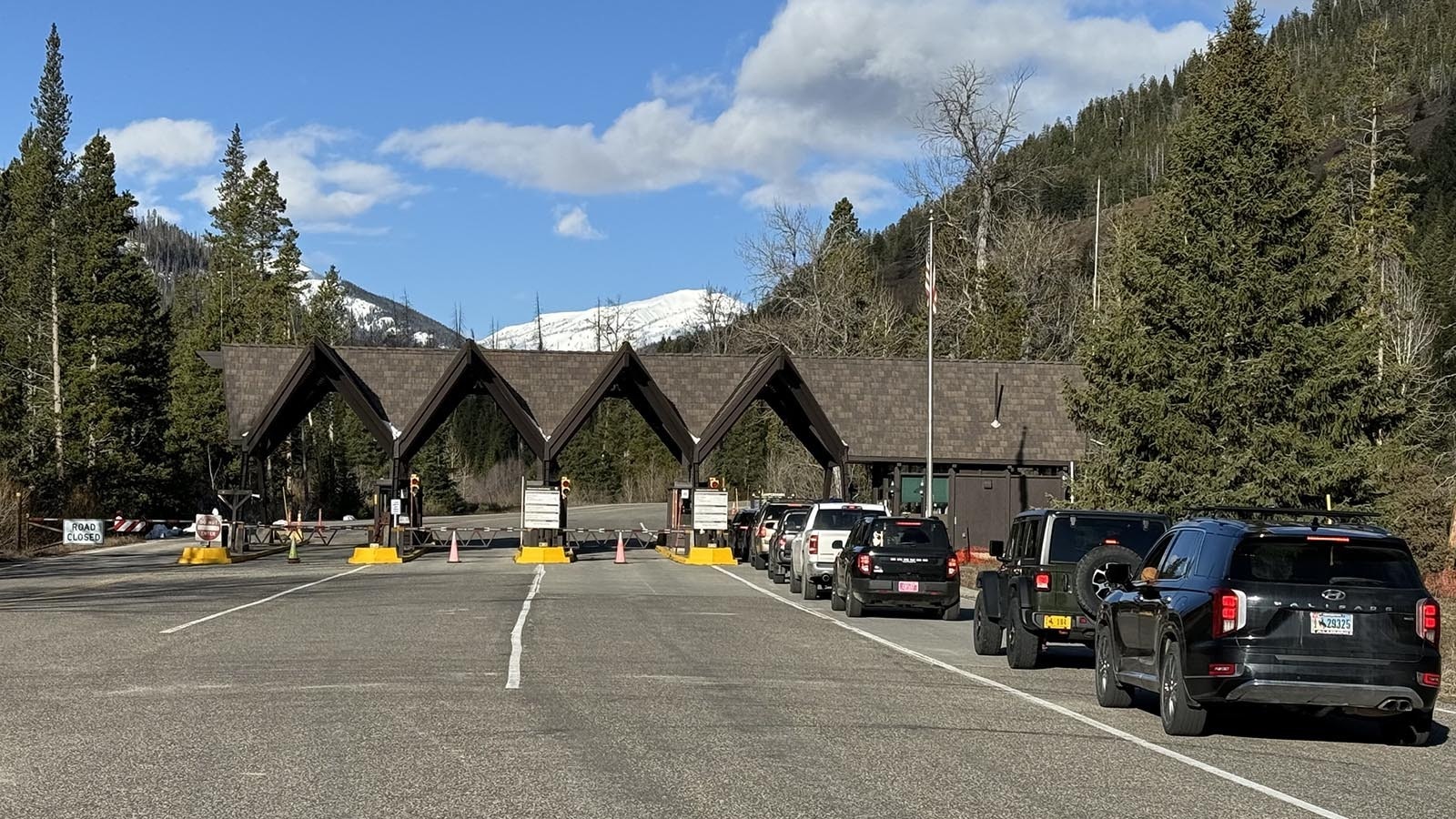Did wolves that were in Moffat County, Colorado, just south of Baggs, move into Wyoming?
That’s been a burning question around the Centennial State, but there don’t seem to be any clear answers, said Colorado resident and wolf-watcher John Michael Williams.
North Seems The Way To Go
Regularly updated wolf activity maps posted on the Colorado Parks and Wildlife website indicate that there were wolves in Moffat County as recently as May.
Williams runs the popular Colorado Wolf Tracker social media site and has a network of contacts among ranchers and others around the state.
Ranchers around Craig, Colorado, have told him they’ve caught glimpses of wolves and found wolf tracks.
The latest CPW wolf activity map as of July 17 doesn’t show any recorded wolf activity in Moffat County, but it shows activity right up to the Wyoming state line in other Colorado counties.
That could indicate that the wolves in Moffat County headed north into Wyoming, Williams said.
“Why aren’t they in Moffat County anymore? Did they go back into Routt County (Colorado) where there’s more competition? I don’t think so. They probably headed north,” he said.
A ‘Warm Welcome’ To Carbon County
If Colorado wolves did head into Wyoming, CPW isn’t saying so.
“We’ve asked Colorado Parks and Wildlife, ‘Are all the collared Colorado wolves still in Colorado?’ And they haven’t answered that question,” Williams told Cowboy State Daily on Friday.
Responding to an email from Cowboy State Daily asking whether there had been any verified reports of Colorado wolves crossing the Wyoming state line, CPW spokesman Joey Livingston wrote that, “CPW does not comment on wildlife movements in other states.”
A Wyoming legislator from Carbon County said residents there are expectantly watching for wolves coming from the south.
When asked if there had been any reports of wolves there, Sen. Larry Hicks, R-Baggs, responded via text message late Thursday.
“None as of this morning, but folks are certainly on the lookout to provide a warm welcome if they decide to visit Wyoming,” Hicks said.

What About Those Aircraft?
Moffat County ranchers have also seen CPW aircraft flying overhead, Williams said.
That’s led to some rumors that CPW has been using aircraft and drones to haze wolves back away from the Wyoming state line.
That’s likely not true, Williams said. CPW officials have told him it’s against agency policy to haze wildlife with aircraft.
Livingston also said CPW doesn’t haze or push wolves from the air.
“CPW has used drones or aircraft to monitor wolf activity but has not hazed any wolves,” he said.
Cattle Kill Count Continues To Rise
Meanwhile, wolves have continued to kill livestock in Colorado, Williams said.
Many ranchers and others think that “lethal control” is the only viable option, but Colorado Gov. Jared Polis doesn’t seem to like that idea, Williams said.
According to CPW’s latest confirmed wolf depradation report, 30 cattle and sheep and three dogs have been killed by wolves in Colorado since December 2021.
Wolves are thought to have entered Colorado on their own from Wyoming sometime around 2020-2021.
The Gittleson family runs a cattle ranch in Colorado’s North Park about 12 miles from the Wyoming state line. They’ve reported losing numerous cattle to wolves since 2021.
The North Park pack eventually fizzled out, some of its members are thought to have crossed back over into Wyoming and been killed by hunters.
In December 2023, CPW released 10 wolves that had been captured in Oregon and transported to the Centennial State. The wolf reintroduction was authorized by Colorado’s Proposition 114. It barely squeaked by voters Nov. 3, 2020, by a margin of 50.91% to 49.09%.
The first reports of cattle killed by wolves after the reintroduction came in April. Since then, 15 cattle and sheep have been killed by wolves, according to CPW.
Mark Heinz can be reached at mark@cowboystatedaily.com.





